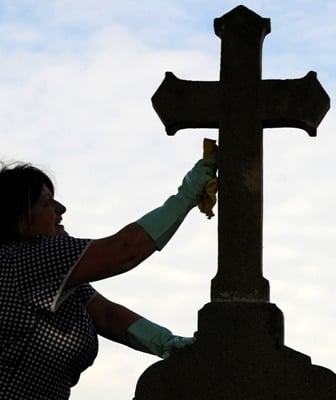
I know that on All Saints Day we commemorate all the saints in heaven, but can you tell me something of the history of the feast? For how long has it been celebrated?
The feast has a long history, a very long history, and it is quite fascinating, going back to the early Church.
The first saints to be honoured liturgically were the martyrs, including of course the apostles. In the early centuries, the Church celebrated the anniversary of a martyr’s death at the place of the martyrdom, but around the fourth century dioceses would share relics of the martyrs with other dioceses and celebrate the feast on the same day.
Even without relics, neighbouring bishops sometimes gave permission for the veneration of the martyr in their own diocese.
During the persecution under the emperor Diocletian at the beginning of the fourth century the number of martyrs became so great that a separate day could not be assigned to each one, so the Church established a common feast day for all the martyrs who had no proper celebration.
In Antioch this feast was celebrated on the Sunday after Pentecost. At the end of the fourth century, both St Ephrem and St John Chrysostom mention the feast.
In the West too, St Maximus of Turin in the fifth century preached in honour of all the martyrs on the Sunday after Pentecost.
At first only martyrs and St John the Baptist, whose sanctity was proven, were honoured by special feast days. But then other saints were gradually added, especially the great confessors of East and West. The word ” confessor” in its broadest sense, came to mean any saint who was not a martyr.
In the Eastern Church the first ones to receive public veneration as confessors after the persecutions were Saints Anthony (d. 356), Hilarion ( d. 371) and Athanasius (d. 373).
In the West the first confessors venerated as such were Saints Sylvester ( d. 335), Martin of Tours (d. 397), Severus (d. ca. 409), Augustine (d. 430) and Apollinaris (fifth century).
Since the number of confessors grew rapidly, as early as the year 411 there was a common commemoration in the Chaldean calendar of all confessors on the Friday after Easter.
The first mention of a feast to honour all the saints on November 1 seems to have come during the pontificate of Pope Gregory III (731-741).
In 732 he consecrated a chapel in the Basilica of St Peter dedicated to ” all the apostles, martyrs, confessors, and all the just and perfect who are at rest throughout the whole world” and fixed the anniversary for November 1.
The feast on that date soon spread to England and Germany.
A century later Pope Gregory IV (827 844) extended the celebration on November 1 to the universal Church. In the ninth and 10th centuries the feast was listed in Sacramentaries as the Natale omnium sanctorum, or birthday of all the saints.
The feast was so important that from the beginning it was celebrated with a vigil and, from the time of Pope Sixtus IV (1471-84), with an octave.
The vigil, or liturgical celebration on the day before the feast, came to be known popularly as Hallowe’en, hallowed evening. Both the vigil and the octave were suppressed in 1955.
So the feast has a long history, going back in its present form to the eighth century. It responds to the desire of the Church to commemorate all the saints, especially those who have no proper feast day of their own.
Today the feast of All Saints is celebrated as a Solemnity, a feast of the highest rank.
It is listed as a holy day of obligation in the Code of Canon Law (cf. Can. 1246), but it is up to each Episcopal Conference to decide whether it is to be a holy day in their territory.
In Australia the feast is no longer a holy day.
The feast commemorates the “great multitude which no man could number” ( Rev 7:9) of saints in heaven, and is also a reminder that all the baptised are called to the fulness of love and holiness.
